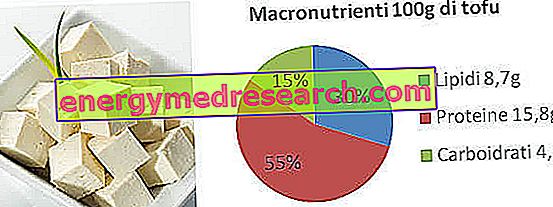Definition
Premenstrual syndrome is defined as a heterogeneous complex of psycho-biological symptoms, disorders and alterations that occurs in the woman one or two weeks before the menstrual flow. The frequency, intensity and type of symptoms are quite variable from woman to woman.
Causes
Only hypothesis, no scientifically proven theory on the causes triggering the premenstrual syndrome. The belief that the progestin defect - typical of the luteinic phase - can somehow heavily affect the woman's mood is credited. Other causal hypotheses include: vitamin B6 defect, alteration of thyroid function (hypothyroidism associated with premenstrual syndrome), prostaglandin E1 defect, hypoglycemia.
Symptoms
The symptoms associated with premenstrual syndrome are extremely variable. The most frequent are listed below: altered concentration and mood, fatigue, increased / lacked appetite, weight gain, depression, difficulty in falling asleep, joint / muscle disorders, swollen and heavy legs, breast swelling, irritability, water retention, etc.
Natural Care
Diet and Nutrition
Information on Premenstrual Syndrome - Useful drugs against Premenstrual Syndrome are not intended to replace the direct relationship between health professional and patient. Always consult your doctor and / or specialist before taking PMS - Useful drugs against PMS.
drugs
When the symptoms associated with premenstrual syndrome are so intense and frequent that they disturb the tranquility of the woman, or at least interfere with normal daily activities, it is advisable to use the aid - thoughtful and intelligent - of drugs.
As can be guessed, given the prodromal heterogeneity associated with the premenstrual syndrome, the pharmacological therapies aimed at lightening the symptoms are very varied: only the doctor can direct the affected patient towards the most suitable therapy.
Oral contraceptives
- Ethinyl estradiol / Levonorgestrel (eg Loette, Microgynon, Miranova, Egogyn): we are talking about contraceptive pills useful for reducing pain symptoms and altered mood, typical disorders of premenstrual syndrome. These drugs are available in packs of 21-28 tablets: each tablet consists of 0.02 mg of ethinyl estradiol and 0.1 mg of levonorgestrel. The pharmacological treatment involves taking one tablet a day, for 21 days, possibly at about the same time each day, followed by a free one-week interval.
- Desogestrel / Ethinyl estradiol (eg Gracial, Novynette, Lucille, Dueva, Securgin): these are tablets coated with 20 mcg of ethnyl estradiol and 150 mcg of desogestrel. The dosage of these drugs reflects the one described above: the correct modality of taking these active ingredients generally guarantees a significant reduction of premenstrual symptoms. Do not forget, however, that in some patients the worsening of the prodromes can sometimes be observed: in this case, do not hesitate to contact the doctor. However, in the first three months of taking the pill a change of symptoms is very frequent, in a positive or negative sense.
Painkillers / anti-inflammatories : these are prostaglandin inhibitors, useful for relieving pelvic pain, headache and diarrhea, associated (in this case) with premenstrual syndrome. Sometimes, the doctor prescribes combined analgesic drugs, indicated to alleviate more disorders:
- Ibuprofen (eg. Brufen, Kendo, Moment): take on the palate 200 to 400 mg of active ingredient (tablets, effervescent sachets) every 4-6 hours, as needed. In some extreme cases (rare), the analgesic can be administered intravenously (400 to 800 mg every 6 hours, as needed)
- Diclofenac (eg Dicloreum, Fastum Anti-painkiller, Voltaren) generally, the recommended dose is 50 mg three times a day, to be taken orally. Depending on the intensity of the symptoms, it is possible to increase the dose up to 100 mg / day. Consult your doctor.
- Paracetamol (painkiller eg Tachipirina, Buscopam Compositum) + Pamabrom (diuretic) + pyrilamine (anticholinergic / antihistamine): indicated to relieve premenstrual symptoms such as cramps, muscle pain, swelling, headache, fatigue, weight gain, breast tenderness. The antihistamine and the analgesic act in synergy reducing the pain perception and the discomfort associated with the premenstrual period. The diuretic, on the other hand, is indicated for reducing excess water and for alleviating the perception of swelling and water retention. Only the paracetamol + pamabrom combination can be taken based on the symptoms reported by the patient. Consult your doctor.
Diuretics : favoring diuresis, these drugs are indicated to counteract water retention. The intake of diuretics, under medical prescription, is an aid to counteract the perception of swelling and stagnation of liquid (in particular to the legs)
- Spironolactone (eg Aldactone, Uractone, Spirolang): reduces testosterone levels. Advantage over other diuretics: avoid massive potassium losses. The drug is commercially available in the form of 25-50-100 mg tablets: it is up to the doctor to prescribe the most suitable posology for the patient's premenstrual disorder.
- Pamabrom: generally, the drug must be administered to the posology of a tablet 4 times a day. Do not take more than 4 tablets a day.
VITAMIN B6 (eg. Benadon, Coxanturenasi, Xanturenasi): in general, due to the premenstrual syndrome associated with significant changes in mood, the integration of vitamin B6 (300-500 mg / day, as prescribed by the doctor) is recommended. Indeed, it seems that vitamin B6 deficiency is somehow implicated in the manifestation of premenstrual symptoms.
Hypoprolactineizing drugs : indicated to relieve breast pain (breast tenderness ) from premenstrual syndrome and hyperprolactinemic hypogonadism. The drugs work by reducing prolactin levels.
- Carbergolina (Dostinex): it is recommended to take the drug at a dose of 1 mg per week
- Bromocriptine (Bromocriptine DRM, Parlodel) in the case of breast tenderness associated with premenstrual syndrome, it is recommended to administer 2.5-5 mg of drug per week.
Estrogens : less commonly, the doctor prescribes to the patient suffering from high premenstrual syndrome the assumption of drugs capable of blocking the production of estrogen. The prescription of these drugs is aimed exclusively at treating extreme cases, in which the other drugs are not effective in alleviating premenstrual symptoms.
- Leuprolide (eg Leupron) creates a sort of menopausal state, albeit temporary. Little used in therapy for its high cost and possible side effects. Recommended dosage: 3.75 mg per month, intramuscularly.
- Danazol (eg Danatrol): the molecule is structurally similar to testosterone and boasts suppressive properties of ovarian function, as well as androgenetic (also used in the treatment of endometriosis). The dosage must be established by the doctor; in general, to reduce breast pain, it is recommended to administer 200 mg / day
Antidepressants : to be taken exclusively in the case of premenstrual syndrome characterized by serious disorders
- Fluoxetine (eg Azur, Cloriflox, Fluoxeren, Prozac) the use of this drug is indicated for the premenstrual severe syndrome, associated with depression, marked mood alteration and irritability. Use with extreme caution because side effects could outweigh the benefits. It is recommended to start taking the drug at a dose of 20 mg, orally once a day. The recommended maintenance dose is 20 mg of active per day continuously, or 20 mg per day during the lutein phase (to start 14 days before menstruation). The drug taken at a dosage of 20 mg of day resulted in remarkable results after 6 months of treatment. Do not exceed 80 mg per day.
- Alprazolam (eg. Frontal, Aldeprelam, Xanax): start taking the drug at a dosage of 0.25-0.5 mg, orally, three times a day. When necessary, increase the dosage according to medical indications.
- Sertraline (eg. Zoloft, Sertraline, Tralisen): in the case of premenstrual syndrome, it is recommended to take 50 mg of drug by mouth once a day (during the menstrual cycle or only during the lutein phase, based on what is established to the doctor). The dosage of the drug can be increased to 100 or 150 mg per day. Continue therapy for three months.
Surgical removal of the ovaries : for patients who are unable to derive any benefit from the administration of these drugs, and who do not wish to have children, surgery for surgical excision of the ovaries is possible. To keep in mind that in the hysterectomy (removal of the uterus), the ovaries can be preserved, therefore it is possible the reappearance of the premenstrual syndrome.
Notes: it is possible to adopt simple behavioral rules useful to prevent the onset of premenstrual syndrome:
- reduce salty foods during the luteal phase of the cycle
- take sugary food and drink during the luteal phase (to avoid hypoglycemia)
- avoid alcohol, coffee, chocolate
- consume many vegetables
- take plenty of fluids
- practice autogenic training
- targeted behavioral therapies: increase physical exercise, stress reduction, relaxation
- prepare herbal teas and emmenagogue and antispasmodic drugs (lemon balm, fennel, chamomile, etc.)
- In homeopathy, the Agnocasto is useful for the prevention of symptoms that characterize the menstrual syndrome.



